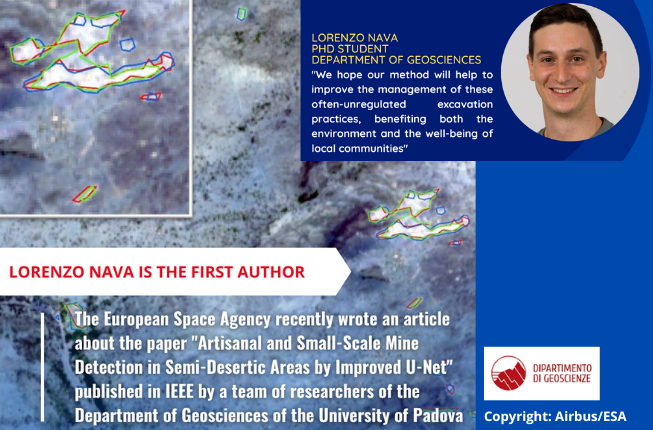Artisanal and small-scale mining: the role of space data and deep learning models
Deep learning models can accurately and inexpensively identify artisanal and small-scale mining (ASM), even in challenging semi-desertic environments.
A study published in IEEE by an international team of researchers from the Department of Geosciences of the University of Padua together with colleagues from the Center Tecnològic de Telecomunicacions de Catalunya (CTTC) in Barcelona, proposed a new approach to map ASM using space data and deep-learning methods. The study area is in central northern Burkina Faso (Africa) where ASM represents a source of subsistence for a significant number of individuals.
The researchers used space data coming from the satellites of the European Space Agency's Pléiades mission and from Copernicus Sentinel-2: these satellite data, coming from instruments that have different but complementary characteristics, revealed that they are the ideal method of mapping small mines, after being analyzed by deep learning protocols
The European Space Agency recently published an insight about this study by interviewing Lorenzo Nava, first author and PhD student at the Department of Geosciences of the University of Padua.

“Our approach is quite straightforward and easily reproducible. It can offer governments timely and precise knowledge about small-scale mining locations inside their territories, necessary for designing and implementing management strategies for ASM formalisation and policy enforcement, as well as to plan environmental remediation interventions”, Nava explains.
Artisanal and small-scale mining (ASM) provides a source of subsistence for many households in sub-Saharan Africa. Burkina Faso is currently the fastest-growing and fifth-largest gold producer in Africa, with ASM providing a livelihood for four to five million people. 75% of households in the country’s Bam province report that ASM is their primary source of income.
Unfortunately, ASM triggers major environmental, social, and health issues. Many mines exist in the informal mining sector and rely on an unskilled workforce using rudimentary tools and techniques. Issues include mercury and other contamination, unsafe working conditions, child labour, respiratory problems, and land-use conflicts.
Government institutions and legal mining companies need ASM inventories to efficiently plan and implement management strategies for their formalisation. In-situ datasets are scarce and in many regions dangerous to collect, due to the presence of armed groups. Instead, satellite data analysed by deep learning protocols prove to be the ideal method of mapping small mines.
The identification of small mines in hard-to-reach areas is just one of the many applications of Earth observation satellite data made accessible by ESA, the European Space Agency underlines.
Artisanal and Small-Scale Mine Detection in Semi-Desertic Areas by Improved U-Net
Authors: Lorenzo Nava, Maria Cuevas, Sansar Raj Meena, Filippo Catani, Oriol Montserrat
Published in: IEEE Geoscience and Remote Sensing Letters





